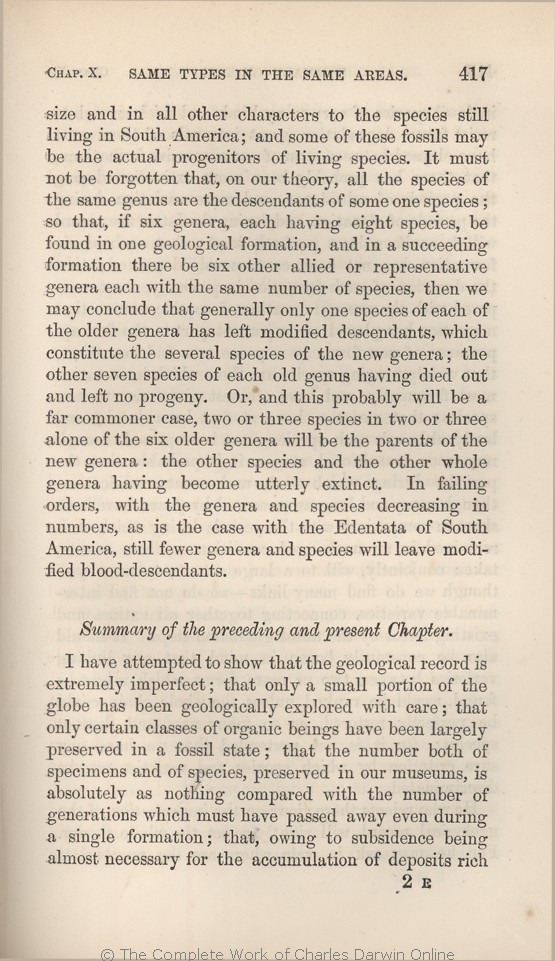size and in
all other | all other 1869 1872 | | other 1859 1860 1861 1866 |
| be 1859 1860 1861 1869 | | have been 1866 1872 |
| living 1859 1860 1861 1869 | | the living 1866 1872 |
| our 1869 1872 | | my 1859 1860 1861 1866 |
| are the descendants of 1866 1869 1872 |
| have descended from 1859 1860 1861 |
| that, 1866 1869 1872 | | that 1859 1860 1861 |
| a 1866 1869 1872 | | the next 1859 1860 1861 |
| each with 1869 1872 | | with 1859 1860 1861 1866 |
| generally only 1866 1869 1872 | | only 1859 1860 1861 |
| ..... 1866 1869 1872 | | six 1859 1860 1861 |
| which constitute the several species of the 1866 1869 |
| constituting the six 1859 1860 1861 |
| which constitute the 1872 |
| genera; 1866 1869 |
| genera. 1859 1860 1861 |
| genera containing the several species; 1872 |
| the 1866 1869 1872 | | The 1859 1860 1861 |
| each 1869 1872 |
| the 1859 1860 1861 |
| each of the 1866 |
| genus having 1869 1872 |
| genera have all 1859 1860 1861 |
| genera having 1866 |
| ..... 1866 1869 1872 | | have 1859 1860 1861 |
| and this probably will 1869 |
| which would probably 1859 1860 1861 |
| and this probably would 1866 |
| and this will 1872 |
| in 1869 1872 | | of 1859 1860 1861 1866 |
| two 1859 1860 1861 1869 1872 | | only two 1866 |
| alone 1859 1860 1861 1869 1872 | alone 1866 |
| be 1869 1872 | | have been 1859 1860 1861 1866 |
| ..... 1866 1869 1872 | | six 1859 1860 1861 |
| genera: 1869 1872 | | genera; 1859 1860 1861 1866 |
| ..... 1869 1872 | | old 1859 1860 1861 1866 |
| whole 1859 1860 1861 1869 1872 | | old whole 1866 |
| genera 1859 1866 1869 1872 | | old genera 1860 1861 |
| numbers, 1859 1860 1861 1866 1869 | | numbers 1872 |
| ..... 1869 1872 | | apparently 1859 1860 1861 1866 |
| with 1869 1872 | | of 1859 1860 1861 1866 |
| leave 1866 1869 1872 | | have left 1859 1860 1861 |
|
Summary
|
Summary
1866 1869 1872 | |
Summary
1859 1860 1861 |
|
of
1866 1869 1872 | |
of
1859 1860 1861 |
|
the
1866 1869 1872 | |
the
1859 1860 1861 |
|
preceding
1866 1869 1872 | |
preceding
1859 1860 1861 |
|
and
1866 1869 1872 | |
and
1859 1860 1861 |
|
present
1866 1869 1872 | |
present
1859 1860 1861 |
|
Chapter
. 1869 | |
Chapters
.—
1859 | |
Chapters.
—
1860 | |
Chapter.
—
1861 | |
Chapter
. 1866 | |
Chapters
. 1872 |
|
I have attempted to show that the geological record is extremely imperfect; that only a small portion of the globe has been geologically explored with care; that only certain classes of organic beings have been largely preserved in a fossil state; that the number both of specimens and of species, preserved in our museums, is absolutely as nothing compared with the
..| ..... 1869 1872 | | incalculable 1859 1860 1861 1866 |
| almost necessary 1861 1866 1869 1872 | | necessary 1859 1860 |
| ..... 1861 1866 1869 1872 | | fossiliferous 1859 1860 |
|









